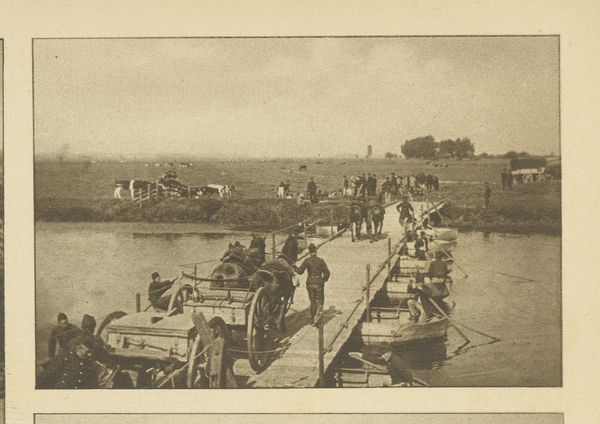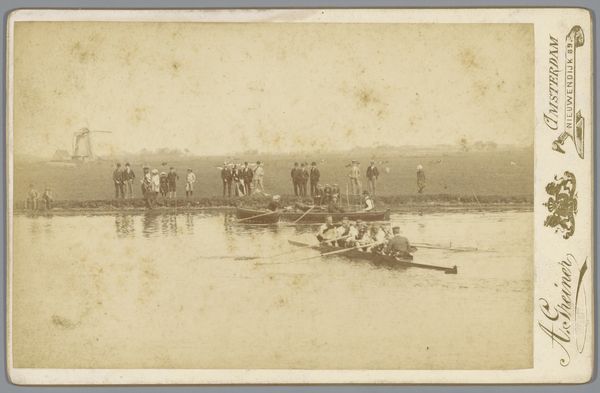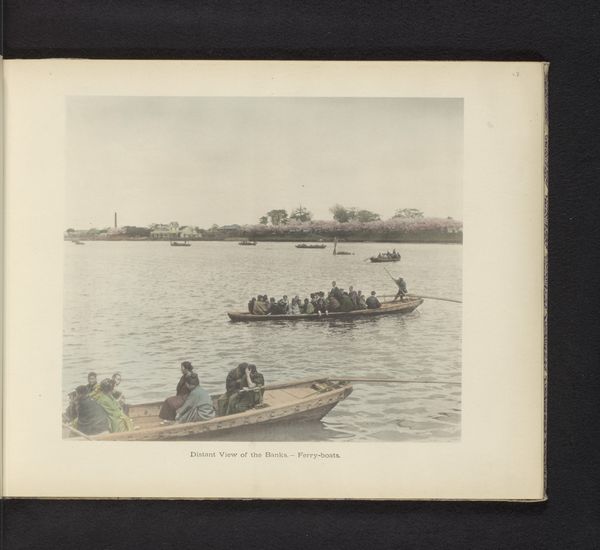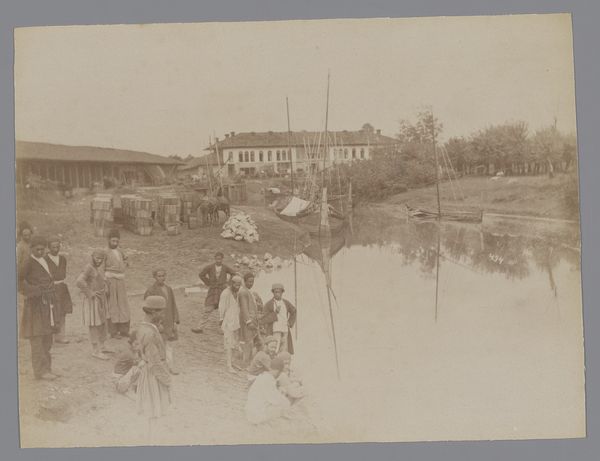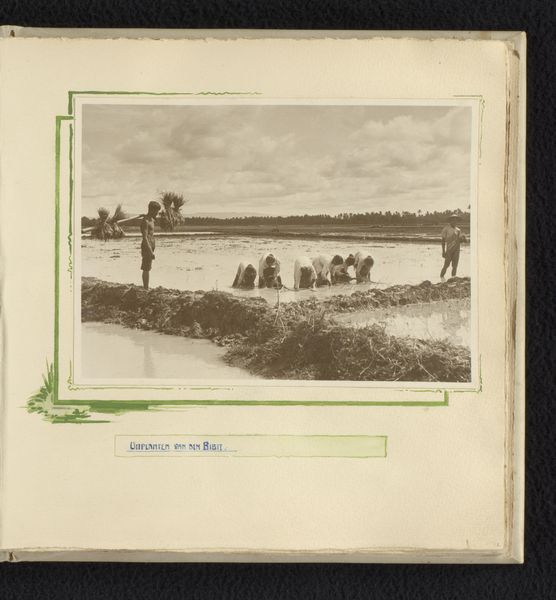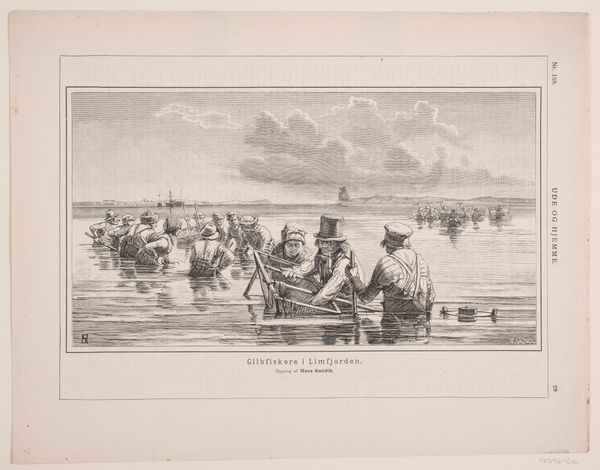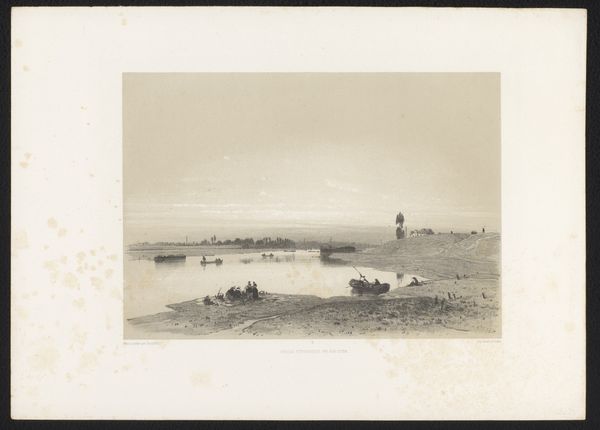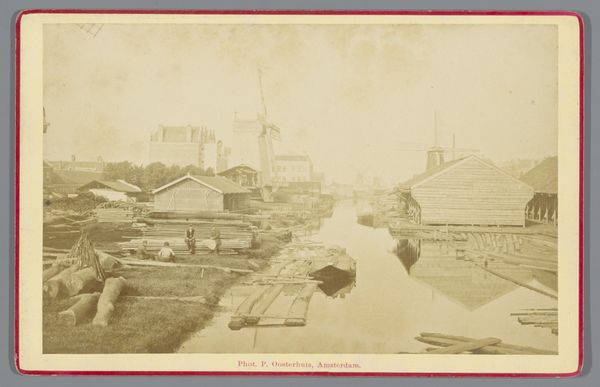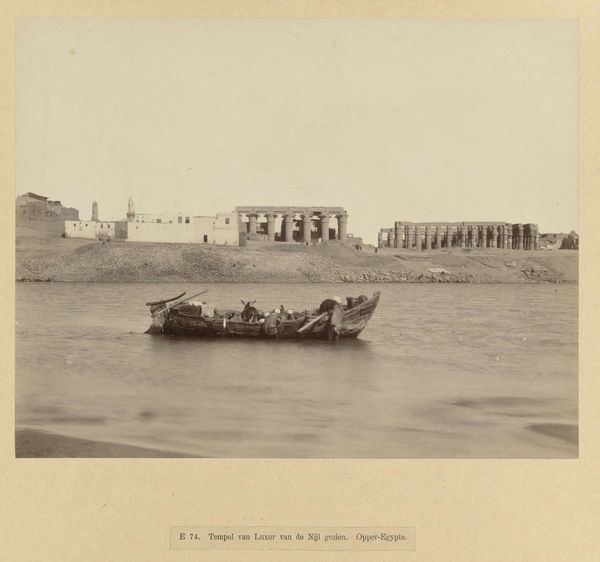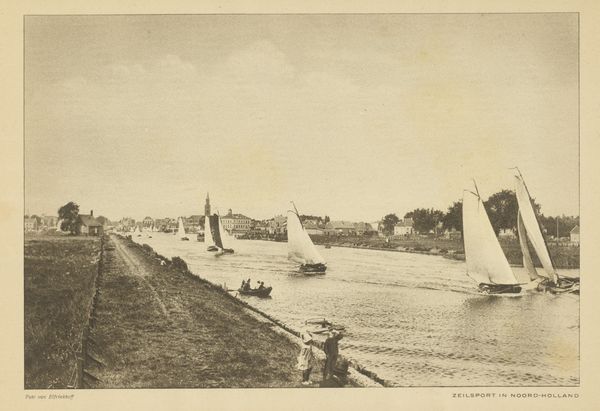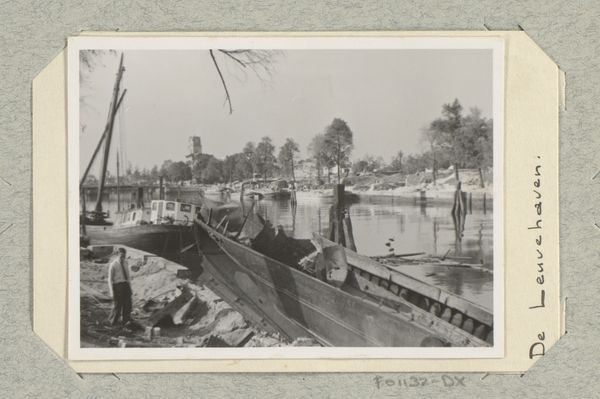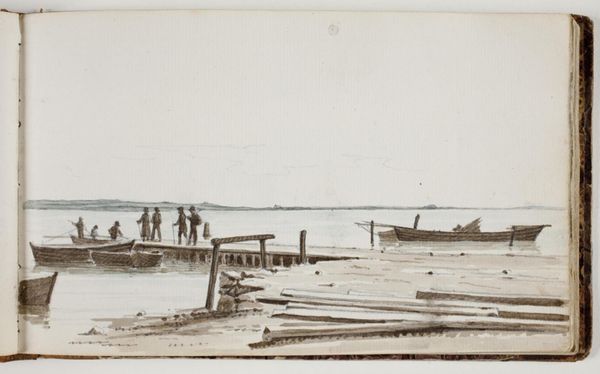
Militairen steken een rivier over met een tijdelijke brug tijdens een oefening before 1915
0:00
0:00
Dimensions: height 76 mm, width 117 mm
Copyright: Rijks Museum: Open Domain
Curator: This gelatin-silver print, dating from before 1915, captures a military exercise, titled “Militairen steken een rivier over met een tijdelijke brug tijdens een oefening” or "Soldiers Crossing a River on a Temporary Bridge During an Exercise," by J. van Veen. What’s your initial impression? Editor: It strikes me as a tableau of ordered movement juxtaposed against the stillness of nature. There's a somber, almost resigned atmosphere, considering the activity depicted. It also brings to mind the precariousness of military actions and colonial conquest during this period. Curator: The act of building bridges is richly symbolic, often representing connection and transition. This temporary bridge seems to undermine the idea of true, sustained connection; it speaks to the impermanence of constructed alliances and power during wartime. Does the quick, possibly tactical crossing remind you of any cultural references or beliefs tied to river crossing in literature, myths, or art? Editor: Instantly, the image recalls the numerous pontoon bridges constructed and destroyed across Europe during both World Wars—emphasizing that connection wasn’t the purpose. In terms of cultural continuity, though, I do think of myths and literature that are full of significant river crossings symbolizing the entrance into a new, and possibly dangerous phase of life. This image is certainly that, though one wonders whether a temporary military exercise has any broader social meaning for the civilian world. Curator: It brings forward a concept deeply rooted in social-political anxiety. Consider the collective psyche before WWI; these drills are rehearsals for impending violence, a collective trauma foreshadowed in peacetime "games." Editor: The photograph itself becomes a piece of historical evidence, a quiet commentary on the normalization of war through routine exercise, almost as a propaganda tool. And because this scene, like any war or show of force, disrupts ecological equilibrium in tangible and conceptual ways, it leaves you pondering whether we will always engage in such behaviors. Curator: Yes, what initially appeared to be a documentary photograph unveils layers of meaning far exceeding the scene's apparent neutrality. It reminds us to question, dissect, and, possibly, confront recurring cultural echoes in our own time. Editor: Absolutely. Even a seemingly straightforward historical image like this becomes a potent reminder of how power, perception, and preparation intersect and impact both individuals and societies—revealing enduring challenges and cycles we must continually analyze.
Comments
No comments
Be the first to comment and join the conversation on the ultimate creative platform.
